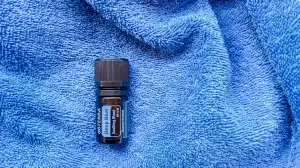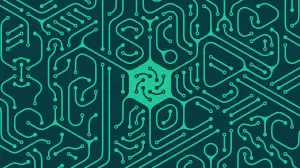Unlocking the Health Benefits of Eating Corn Starch: A Comprehensive Guide to Pica and its Effects

- Understanding pica: a medical condition characterized by unusual cravings
- The potential risks of consuming corn starch
- Nutritional value of corn starch and its impact on the body
- Health implications of eating corn starch for individuals with pica
- Tips for managing and overcoming the urge to eat corn starch
- Seeking professional help for pica and its associated behaviors
Corn starch, a common ingredient found in many recipes, has gained popularity as a snack on its own. However, for some individuals, the consumption of corn starch goes beyond mere culinary pleasure. It is linked to a condition known as pica, characterized by unusual cravings for non-nutritive substances. In this comprehensive guide, we will explore the health benefits and risks associated with eating corn starch, shedding light on the connection between this behavior and pica.
Understanding pica: a medical condition characterized by unusual cravings
Pica is a medical condition that involves the persistent and compulsive consumption of non-food substances. This disorder is often characterized by cravings for items such as dirt, clay, ice, and in some cases, corn starch. While the exact cause of pica is not fully understood, it is believed to be linked to nutritional deficiencies or underlying mental health conditions.
Individuals with pica may experience intense cravings for corn starch due to its unique texture and taste. These cravings can be difficult to resist and may lead to excessive consumption of corn starch, which can have negative consequences on one's health. It is important to recognize that pica is not simply a matter of personal preference or choice, but rather a complex medical condition that requires understanding and support.
The potential risks of consuming corn starch
Consuming corn starch may have potential risks that individuals should be aware of. One of the main concerns is the high calorie content of corn starch, which can contribute to weight gain and obesity if consumed in excess. Additionally, corn starch is a refined carbohydrate with a high glycemic index, meaning it can cause rapid spikes in blood sugar levels. This can be problematic for individuals with diabetes or those at risk of developing diabetes. Furthermore, excessive consumption of corn starch can lead to nutrient deficiencies as it lacks essential vitamins, minerals, and fiber found in whole grains. It is important to consume corn starch in moderation and as part of a balanced diet to minimize these potential risks.
Nutritional value of corn starch and its impact on the body
Corn starch is primarily composed of carbohydrates, making it a rich source of energy for the body. It contains no fat or cholesterol and is low in sodium. However, it lacks significant amounts of vitamins and minerals. While corn starch does not provide many essential nutrients, it can still contribute to overall calorie intake. Consuming excessive amounts of corn starch can lead to weight gain and potentially increase the risk of developing conditions such as obesity and diabetes. It is important to consume corn starch in moderation as part of a balanced diet to avoid these negative impacts on the body.
Health implications of eating corn starch for individuals with pica
Individuals with pica who consume corn starch may experience various health implications. One of the main concerns is the potential for nutrient deficiencies. Corn starch lacks essential vitamins and minerals, such as iron and calcium, which are crucial for maintaining optimal health. Prolonged consumption of corn starch can lead to an imbalance in nutrient intake, potentially causing anemia and weakened bones. Furthermore, excessive intake of corn starch can also lead to weight gain and digestive issues, such as bloating and constipation. It is important for individuals with pica to be aware of these health risks and take steps to address their cravings in a healthier way.
Tips for managing and overcoming the urge to eat corn starch
1. Identify triggers: Pay attention to situations or emotions that may trigger the urge to consume corn starch. By recognizing these triggers, you can develop strategies to avoid or cope with them.
2. Find alternatives: Substitute the consumption of corn starch with healthier alternatives such as fruits, vegetables, or whole grains. These foods provide essential nutrients and can help satisfy cravings in a more nutritious way.
3. Distract yourself: Engage in activities that divert your attention away from the urge to eat corn starch. This could include hobbies, exercise, or spending time with friends and family.
4. Seek support: Reach out to a trusted friend or family member who can provide encouragement and help you stay accountable in managing your cravings for corn starch.
5. Practice stress management techniques: Stress can often exacerbate cravings for unhealthy foods. Incorporate stress management techniques such as meditation, deep breathing exercises, or yoga into your daily routine to help reduce the urge to consume corn starch.
6. Gradual reduction: If you find it challenging to quit consuming corn starch cold turkey, consider gradually reducing your intake over time. Set small goals for yourself and celebrate each milestone achieved.
7. Stay hydrated: Dehydration can sometimes trigger cravings for unusual substances like corn starch. Ensure you are drinking enough water throughout the day to keep your body hydrated and reduce cravings.
Remember, overcoming any addiction or habit takes time and patience. If you continue to struggle with managing your urge to eat corn starch, it is important to seek professional help from a healthcare provider or therapist who specializes in treating pica-related behaviors.
Seeking professional help for pica and its associated behaviors
Seeking professional help is crucial for individuals struggling with pica and its associated behaviors. A healthcare provider, such as a doctor or therapist, can provide guidance and support in managing the condition. They can conduct a thorough evaluation to determine any underlying medical or psychological factors contributing to the cravings for corn starch. Additionally, they can develop a personalized treatment plan that may include therapy, medication, or dietary changes. Remember, reaching out for professional assistance is an important step towards promoting overall well-being and overcoming pica.
In conclusion, while corn starch can provide some nutritional benefits, it is important to approach its consumption with caution. For individuals with pica, the urge to eat corn starch can have serious health implications. It is crucial to seek professional help and guidance in managing and overcoming this craving. Ultimately, promoting a balanced and healthy approach to eating is key, ensuring that our bodies receive the necessary nutrients from a variety of sources while avoiding excessive or harmful behaviors.
Published: 08. 12. 2023
Category: Health



